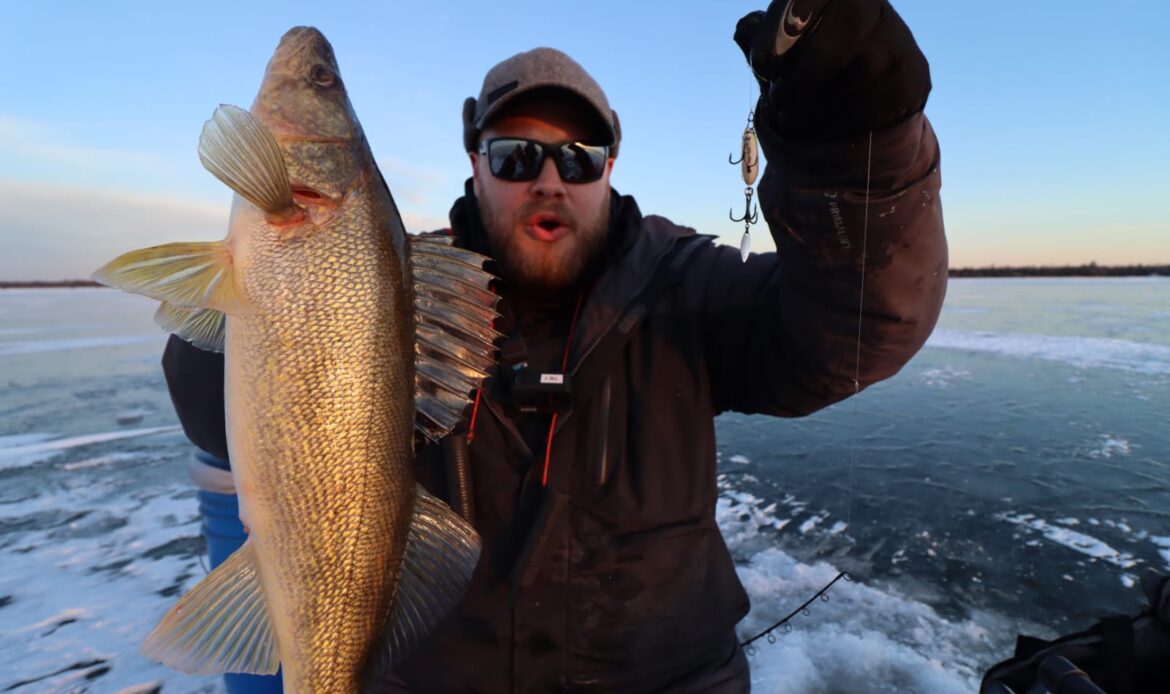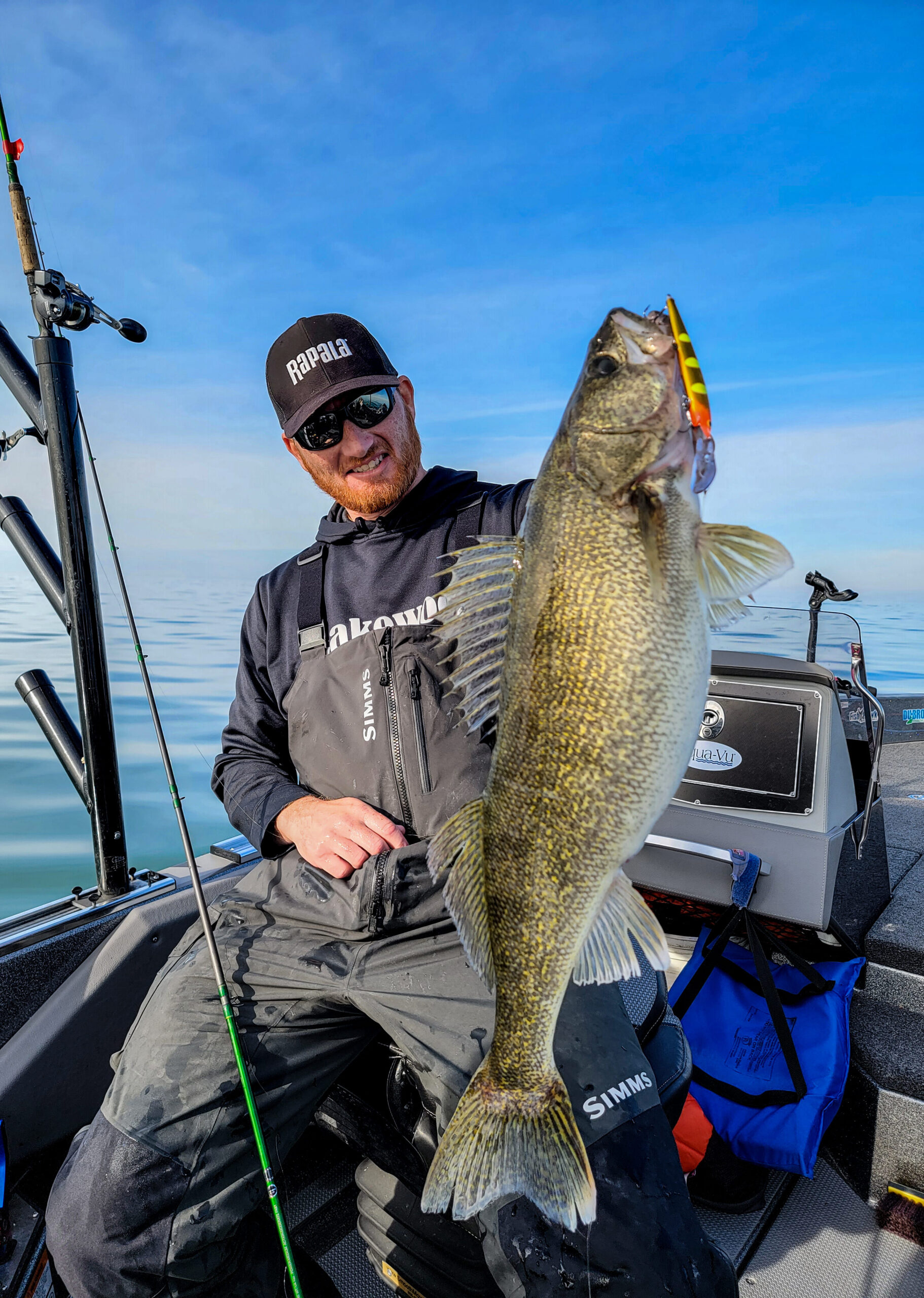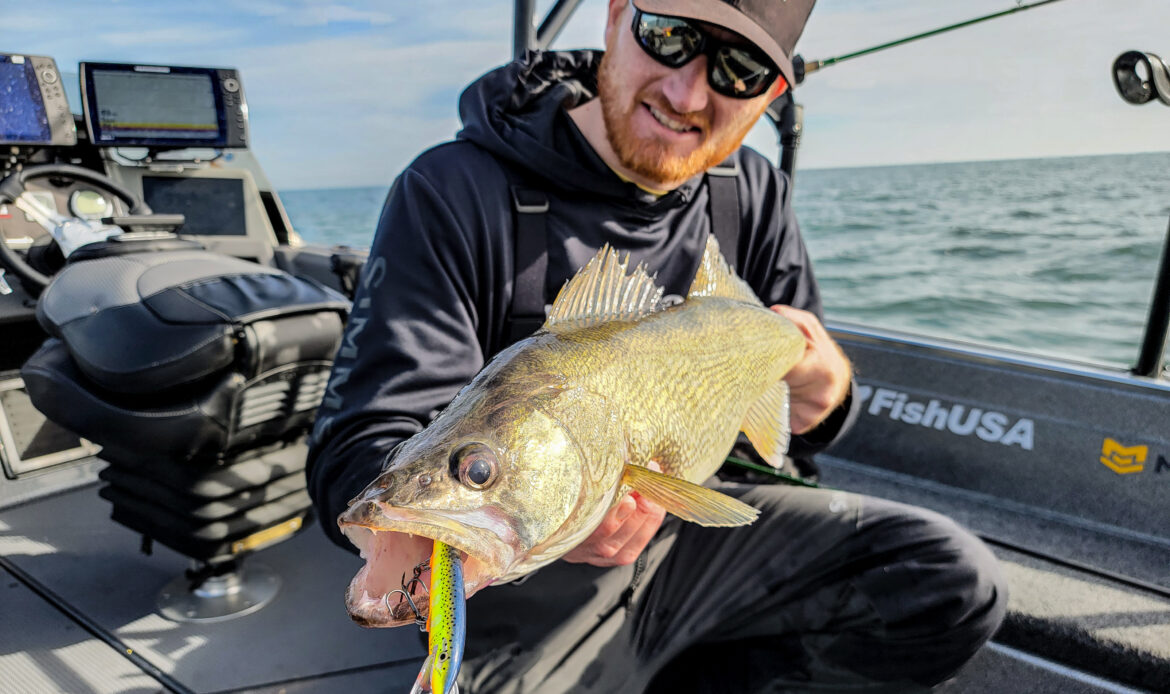The story behind Rapala and its influence in walleye fishing.
“We are all fishing lunatics here. At times, it’s like we speak a different language. When I enter the office, it’s “rip” this, “rap” that. When I return to the real world, I often think, man… are we weird or what… There is a little piece of Lauri Rapala’s pride in every lure we make. We respect the legacy and the tradition and will carry it forward in every generation.” – Stephen Anfang, Head of Operations at Rapala (Headquartered in Minnetonka, Minnesota)
With over 20 million lures sold annually in 40+ countries worldwide, the first lure you launched into your local body of water very well might have been a Rapala. If not your first lure, some Rapala product or other (most likely this one, “that started it all”) reverberates in the annals of your fishing memory. Rapala makes the World’s #1 selling fishing lure of all time.

Like any good fishing story, Rapala (the most recognized Finnish word in international use outside of sauna) began with a legend and rose to prominence with a stroke or two of luck from the fishing gods. With so much already written and documented about the company’s storied origins, this article takes a shallow rip-rap dive into the Rapala’s humble beginnings, why it remains one of the biggest fish brands on the planet, and how these baitfish imitations are nearly irresistible to walleye.
Beginning With A Legend
“The world’s favorite fishing lure since 1936,” responsible for more world record fish than any other. The Rapala legend began with “a poor, hungry Finnish fisherman and a carving knife.” Initially, from the small village of Rapala, Finland, Lauri Saarinen invented a more effective and efficient way to catch fish than the traditional method of baiting and re-baiting set lines.
One day on Lake Paijanne, Saarinen made a simple yet genius observation, “big fish eat little fish, especially those that are wounded.” With cork, shoemaker’s knife, sandpaper, tinfoil chocolate wrappers, and melted photographic negatives, Saarinen built the first-ever Rapala prototype (then known as the “wobbler”), a lure that would not only help him catch more fish but also change the face of fishing forever.
From Lake Paijanne to Mainstream America
How did Lauri Saarinen become Lauri Rapala? When he was seven years old, a clergyman at the local parish forgot Lauri’s last name and substituted the name of the village in which he was born, hence the name Lauri Rapala. A fortuitous mistake since “Saarinen” doesn’t roll off the tongue quite like “Rrr – apala” (contentiously but correctly pronounced R?p-a-la). Rumor had it Lauri was catching upwards of 600 pounds of fish per day on his wobbling minnow, and it didn’t take long for word to travel fast the fishing world over.
After the Helsinki Summer Olympic Games (1952), quite a few American athletes brought Rapala lures homes as gifts for their family and friends. The lures garnered a cult following, leading to a merger (1959) with Minnesota’s Normark Corporation (known today as Rapala VMC) that included a capital injection of USD 10,000 (monumental at the time) to help build a factory in Finland. Rapala began officially exporting its lures to the United States in 1961.

In another stroke of luck, a two-page article promoting Rapala titled “A Lure Fish Can’t Pass Up” ran in the same issue of Life Magazine that covered the death of Marilyn Monroe (Life’s largest-selling of all time). Word about the irresistible lure’s fish-catching effectiveness spread like a Paavo Nurmi 10,000-meter sprint. Before long, Lauri and his team in Finland were filling millions of orders.
“Hand-Tuned and Tank-Tested” Today
To this day, every Rapala balsa lure is hand-tuned and tank-tested to ensure that the performance and quality would meet Lauri’s standards. Reflecting on Rapala’s design process, Stephen Anfang (Head of Operations at Rapala) states, “Every lure is carefully crafted from years of experience. No product is rushed to market, and there are no shortcuts when it comes to this level of craftsmanship. Think of it as mass customization. There is a little piece of Lauri’s pride in every lure we make. We respect the legacy and the tradition and will carry it forward in every generation.”
A keen fisherman himself, in enthusiastic rip-rap fashion, Anfang rattles off industry slang melded with proprietary wisdom. “If you want to catch walleye, you’ve got to fish a Jigging Shadow Rap using a ripping technique and make sure you’ve got both a Jointed and Glass Shad Rap, Rippin’ Rap, Husky Jerk, Thunderstick, Scatter Rap, Tail Dancer, Hot’n Tot Mad Flash, and X-Rap Jointed Shad in your tackle box, especially if you are headed to Lake Erie, which by the way, I hear is insane.”
Though perhaps helpful to insiders, this diatribe sounds more like a foreign tongue to anyone not deeply involved in walleye fishing culture, a fact not lost on Anfang. “Sorry, we are all fishing lunatics here. At times, it’s like we speak a different language. When I enter the office, it’s “rip” this, “rap” that. When I return to the real world, I often think, man… are we weird or what…” He also specifies it’s his absolute dream job.
A Line Designed Specifically For Walleye
The Rapala company is now headquartered in Minnetonka, Minnesota. It’s the perfect place for Saarinen’s company to land, considering the rich Finnish heritage found in the Upper Midwest, and the region’s wealth of water, fisheries, and anglers. Since Minnesotan’s love walleye (the state fish) and walleye love baitfish, it’s no surprise that Rapala has a pro-walleye line featuring +25 lures designed specifically for catching Minnesota’s favorite table fare. Anfang points out that not long ago walleye were perceived as a finesse fish, only catchable on light tackle, but those days are long gone. Nowadays, anglers are diversifying their tactics, catching walleye on all sorts of bait in all types of conditions.

Most recently, Rapala signed Lake Erie walleye guru and “full-time fishing guy,” Ross Robertson to bolster their pro staff and fill any gaps (if they had any) in their walleye game. Reflecting on Rapala’s innovative nature, Robertson states, “I’ve worked with a lot of companies in my 25+ years as a full-time fisherman, and it became very apparent, very quickly, that these guys do things differently.” He reiterates Anfang’s message regarding Rapala’s extensive research and design process as well as the company’s culture of relentlessly fishy men and women devoted to perfecting new baits three to five years ahead of schedule.
Robertson states, “There are a lot of gimmicky things in the outdoor industry, especially in fishing. You see a lot of companies that put baits out all the time, and then they just kind of go away. You rarely see that with Rapala. Everything in their line-up seems to catch fish. Baits like the Rippin’ Rap (a lipless, deep-bellied bait designed to crank, swim, and rip) are a prime example. There are countless lipless baits out there, but the Rippin’ Rap is in almost every guy’s arsenal. They have so many unique baits that actually work. Consider what the Husky Jerk did 25 years ago and is still doing now. A true, neutrally buoyant, reasonably priced, and perfectly tuned running bait is still an absolute walleye slayer.”



